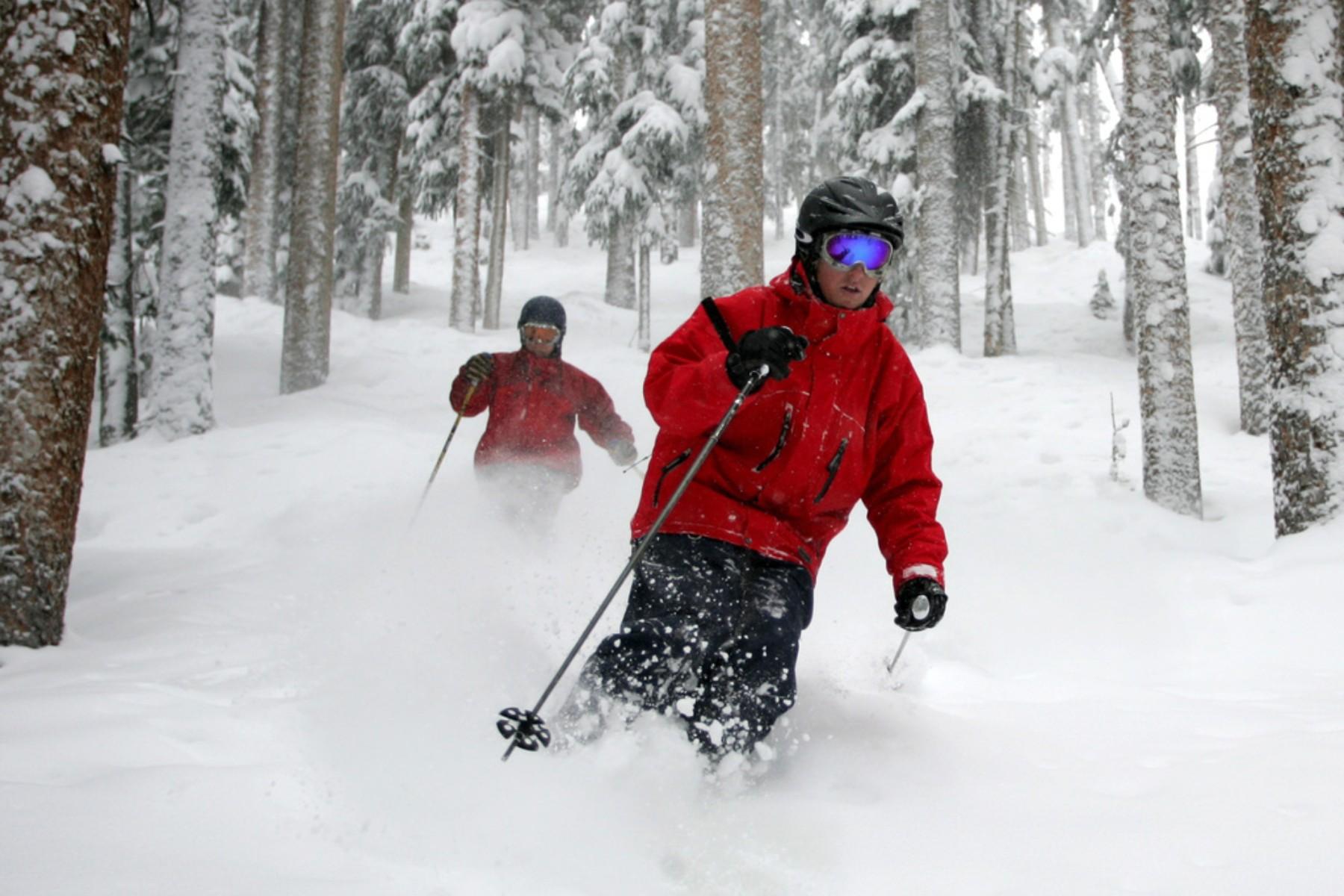It's chile season and people are stocking up on the fruit to roast and eat. As usual, the governors of New Mexico and Colorado are keeping up a good-natured fight about which state's chile is the best—Hatch from New Mexico, or Pueblo chile from Colorado. And this weekend 150,000 people are expected at the 25th annual Chile and Frijoles Festival in Pueblo.
On the Border
Trinidad, Colorado sits just miles from the New Mexico border. There, Trinidad resident Sue Schlensker is outside. Little did she know she would have a conversation about the now infamous chile duel.
"The market over there," she said, "he brings the Pueblo chile, and he only had Hatch chile. I hadn't really eaten Hatch in a long time."
Schlensker's sister picked up a bushel.
"I'm going back to my Pueblo chiles." - Trinidad resident Sue Schlensker
"It just was not the same," she said, laughing. "I'm going back to my Pueblo chiles."
Talk of chiles turned to talk of family. Schlensker explained that her great grandfather had first come from Spain in 1896. They settled in New Mexico and then moved to Trinidad to work in the coal mines. That's where Schlensker was born.
It was part of a bigger pattern of people traveling North, according to Colorado State University-Pueblo historian Jonathan Rees.
As a result, there are a lot of people with mixed loyalties when it comes to the Hatch vs. Pueblo chile war.
The Vegetable and Fruit Developer, and Cultural Terroir
The roots of people's tastes go way back--sometimes one or two generations, sometimes hundreds of years--to the time when chiles were first cultivated in this region.
In Rocky Ford, about an hour east of Pueblo, Mike Bartolo heads up Colorado State University's experiment station at the Arkansas Valley Research Center. He works with farmers to improve their crops and to develop new varieties.

Bartolo is credited with developing the most popular version of the Pueblo chile, the Mosco.
It's named after his uncle, Harry Mosco, an Italian immigrant farmer. When Harry Mosco died, Bartolo said the family found a tiny bag of seeds labeled "Pueblo Chile." So, he planted them.
The chile that came up had Mirasol characteristics, which in Spanish, means "watch the sun." The plants grew up toward the sun instead of down toward the ground. It's one thing that makes the Pueblo chile different from New Mexico's Hatch.

Mirasol chiles were planted in the early decades of the 20th century in the U.S., and one variety was sold as the Pueblo chile. Then, according to Bartolo, that strain disappeared.
In the 1990s, Bartolo started work in earnest to develop an improved version of the Pueblo chile from his uncle's seeds. He said he'd take a single plant and select out the ones that he liked best.
He made those selections to improve the chile nearly 400 times over a period of years, eventually ending up with the current Pueblo/Mosco chile. Most didn't pan out. But when they did, said Bartolo, it meant a product for customers eager for chiles with just the right kick and a story to go with it.

The chiles were popular with a lot of different kinds of people. "We used to use it in seasoning for Italian Sausage," he said. "It really is a metaphor. It was an immigrant itself but it became incorporated into the general cuisine of Italian, dishes, Hispanic dishes, eastern European different types of culture."
It's a sentiment echoed by Jonathan Rees, a historian at CSU-Pueblo. As part of his work, he's written about the history of chiles.
"In Pueblo, Italian American farmers grow Mexican chiles and you can buy them on Greek gyros. Where else but in America is any of that possible?"
"You don't just get flavor from the rain and the dirt. You get flavor from a history and a set of skills and practice that will affect the way it tastes."
To understand the contest between Hatch and Pueblo chiles, Reed said you need to know about something called cultural terroir. It's a French term that refers to the way wine differs based on where it is grown and who grows it.
"You don't just get flavor from the rain and the dirt. You get flavor from a history and a set of skills and practice that will affect the way it tastes," Rees explained.
In 2005 the new Pueblo chile, Mosco, went on the market. That's when the battle between Colorado and New Mexico—the Pueblo and the Hatch—heated up.

Meanwhile, in New Mexico
Raton, New Mexico is just a few miles south of Trinidad, just over Raton pass. On this day, there's a chile cook-off in a park near the Amtrak station. It's marked by an Old West-style poster declaring "internationally acclaimed New Mexico versus wannabe Colorado. High noon."
Juanita Armijo Gallegos grew up in Raton. She's at the contest with her chihuahua, Chalupa, and cooked up two dishes.
"I put in a red chile and a green chile. I'm not sure which one is better," she said.
Gallegos said she started working at a local restaurant and making her own chile when she was just a kid.
As for this contest, her dish won.
Her chile? A mix between Hatch and Pueblo.









